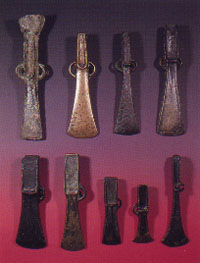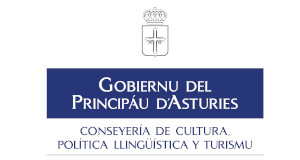From The Neolithic To The Atlantic Bronze Age
15 Avientu, 2008 por Asturies.com
![]()



From the fourth milleniurn B.P. up to the appearance of
an important culture characterised by fortified villages, a series of brilliant
cultures starting with the advanced neolithic and their megaliths dispersed
throughout the whole territory into sites with a strategic command of the
complex system of valleys, whose open and well communicated bottoms have proven
the existence of both pastoral and picker agricultural practices; activities
which in the second millenium bloomed into mining for the two principal minerals
offered by the Asturian sub-soil, (which had appeared for the first time in
the megaliths), gold and copper.
The originality of the products made from these materials was continued throughout the whole of the bronze age, constantly adapting itself to the influences which filtered through from the continental world and integrated into an evident system of atlantic relations between the Iberian peninsula and Brittany and the British Isles based on the ample reserves of gold and copper in Asturies, the gold of Ireland and the tin of Cornwall, Brittany and Galicia.
The stylistic similarity of metal objects found in the north-west cuadrant of the peninsular would seem to confirm the existence of a generalised maritime traffic in the Atlantic bronze age (about 1,000 years B.P.), commercial practices in which Asturies occupied a strategic position, taking in the area between the south of the peninsular and Brittany, which led to a permanent ongoing interchange of manufacturing techniques and models.
The originality of the products made from these materials was continued throughout the whole of the bronze age, constantly adapting itself to the influences which filtered through from the continental world and integrated into an evident system of atlantic relations between the Iberian peninsula and Brittany and the British Isles based on the ample reserves of gold and copper in Asturies, the gold of Ireland and the tin of Cornwall, Brittany and Galicia.
The stylistic similarity of metal objects found in the north-west cuadrant of the peninsular would seem to confirm the existence of a generalised maritime traffic in the Atlantic bronze age (about 1,000 years B.P.), commercial practices in which Asturies occupied a strategic position, taking in the area between the south of the peninsular and Brittany, which led to a permanent ongoing interchange of manufacturing techniques and models.









